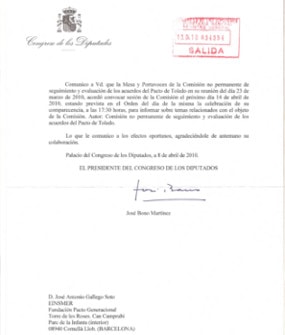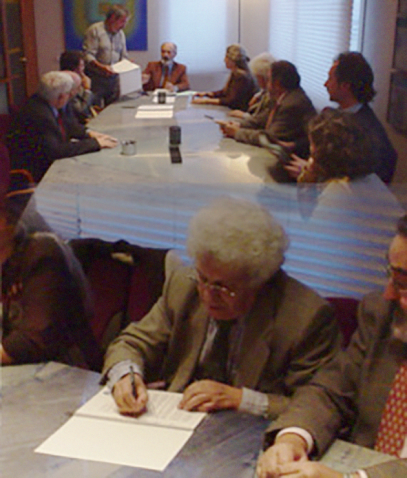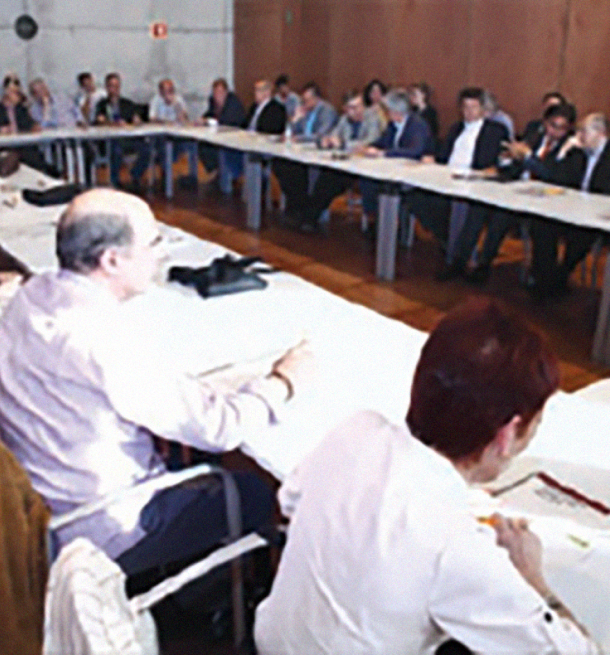
The Generational Pact is a practical and tangible response to a strong intergenerational social demand. Young people need an environment that allows them to channel their human potential - evolutionarily greater, generation after generation -. On the other hand, the elderly need to find satisfactory ways to dump their life and professional experience accumulated over the years, dignifying and doctoring their last latent stage. This exchange, between generations, will accelerate the individual and, therefore, collective development of our society.
For both generations, this will substantially reduce frustration, lack of expectations, fear of unknown situations, the feeling of uselessness, the acceleration of psychopathological and psychosocial processes, vital anguish, individual and social apathy, etc.
A new social order based on the acceleration of knowledge and the active participation of a much larger number of older people in productive and economic activity, taking on a new social role, can be envisaged through this system and the social return of the elderly.
February 25, 2004
Protocol Framework Agreement Ministry of
Labor and Social Affairs
Wednesday, April 14, 2010 at 5:30 p.m.
Session No: 29 Non-permanent Committee on
monitoring and evaluation of agreements
of the Pact of Toledo IX LEGISLATURE
Presentation of. Mr. José Antonio Gallego Soto,
representative of the Fundación Pact Generational,
to report on issues related to the
purpose of the Commission

The "Generational Pact" or "Intergenerational Pact" programme is not a philosophical principle. It is true that, for EINSMER, it is a way of understanding the organization and identifying the assets of experience and knowledge. But it is also, it is a set of actions that aim to emphasize the importance of continuing to rely on the elderly, to establish mechanisms of "conscious inter-managerial solidarity", not "mecanical" ones like the current ones.
This means, for instance, of not extending the retirement age by decree, but ather of promoting the continuity of work activity for the elderly, reformulating the role that, they can play at a certain stage of their lives. We should not necessarily spend more years doing the same thing.
It is possible, for example, that an older person can contribute more in vocational training - establishing the appropriate transfer model in each case - than in the work function that develops in the pre-retirement age.
Deepening Garcinen's idea - by García-Nieto Paris - in order to reformulate new socially useful and economically viable occupations that favor the intergenerational transfer of vital and professional experience.


The act of pre-retirement should not be a burden for the State and the organizations. To this end, in 1995 we promoted the flexible retirement model, within the framework of the non-permanent Toledo Pact Commission on pensions, but always a model of "flexible retirement" model supported by a Strategic Plan that could be modelled and which we still claim today.
Why? - Hence to be aware of the act of intergenerational solidarity - because hypothetically it seems reasonable that if people are dignified - and not retired in their pejorative sense - the productive system and society that we have given, will improve. Only because the System is not an order, is the sum of the state in which people who form it are present.
And this means that a substantial part of the costs of the health and pension system will be optimized. The local economy - microeconomics or economy from our pocket - will consequently improve; education and productivity in our companies will increase -improved competence of people and our organizations-.
It is worthwhile then, to continue at the State and States level, a Program such as the Generational Pact.

A social security system, and, in a more concrete way, a social security system referred to the protection of old age - in retirement, or in permanent withdrawal from worklife due to disability -, is nothing more than a great system of solidarity - the burdens of those who, for one reason or another, because of age or disability, leave their jobs, definitively are assumed by others -, and a great system of intergenerational solidarity - the responsibility for the protection of the generation that retires from work, is assumed by the next generation, as it was by the previous generation-.
This has always been the case in terms of reality. Always and in a spontaneous, biological-cultural way, the principle of intergenerational solidarity has morally regulated intergenerational protection: the the better-off generation protects the worse-off; the active generation - the one that can protect -, the passive - the one that needs to be protected -.This is the expression of a systemic principle inscribed in the biological, cultural, or moral nature of man: that of the return, conscious or unconscious, to the generation now in need of protection from what it did with the previous one.
A social security system referred to the protection of the generation that withdraws from work is no more than the legal assumption of this biological, cultural or moral fact. The pay-as-you-go system - of contributions and benefits - which has been enshrined in law since the end of the 19th century, merely regulates and implements this system of intergenerational solidarity, which reached its peak in the economy of the immediate post-war period.
But precisely because of this, on the one hand because of the close correlation that has occurred in the facts between social protection and economic splendor, and on the other, by its unconscious, or almost unconscious, automatic functioning, the system of intergenerational solidarity entered into a deep crisis as soon as they changed, with the economic crisis of the 70s and with the cultural changes that accompanied it, the social and demographic conditions on which its operation was based during the splendor of the second postwar period. With the economic crisis came the employment crisis, and both crises triggered the crisis of the financial system on which intergenerational solidarity was based. But, the necessary reactions were slow in coming, and when they did come, it took even longer to discover that the images of the automatism of their functioning with which we had lived until then, were more a mirage than a reality. A discovery that, at last, would force us to consider things as a cultural system -which is what it really was- rather than as a financial system -which was merely the expression of it.


For this to happen, not only things would have to change, but above all, attitudes would have to change. The first thing that would have to change is precisely those images of automatism with which the system had apparently worked, with little awareness on our part, that what we had put in place was a system of intergenerational solidarity. Henceforth, intergenerational solidarity would have to learn to function as a conscious and foundational pact, prior to the legal instrumental mechanisms, whereby the different generations would assume, one towards the other, their reciprocal and successive moral obligations, reciprocal and successive, reciprocal and successive, of solidarity. The new intergenerational solidarity must be a conscious solidarity, morally assumed, and only then converted into law. That is what it means, and that is the image, the proposal of an intergenerational pact.
On the other hand, and in order for this founding pact of the new system to function as what it is, as a moral reality, not just a mechanical reality, it will have to be extended not only to the classical protection of a generation delimited with precise borders of the another, but also to all the interstices that occur in the events between successive generations. To the interstices of the classical protection, whereby the departing generation relies on the one incomig one - unidirectionally -, and the new interstices in which the transmission is given to the generation coming from the experience of the departing work.
This transfer of generations, thus conceived and now regulated by the intergenerational pact, will thus be made more gradual than today - delayed retirement in different forms of work, coexistence of retirement and certain forms of work ... - The new attitudes created by the intergenerational pact will necessarily create new rules that make it possible for the financial system to survive, without which the exercise of this solidarity is not really possible.